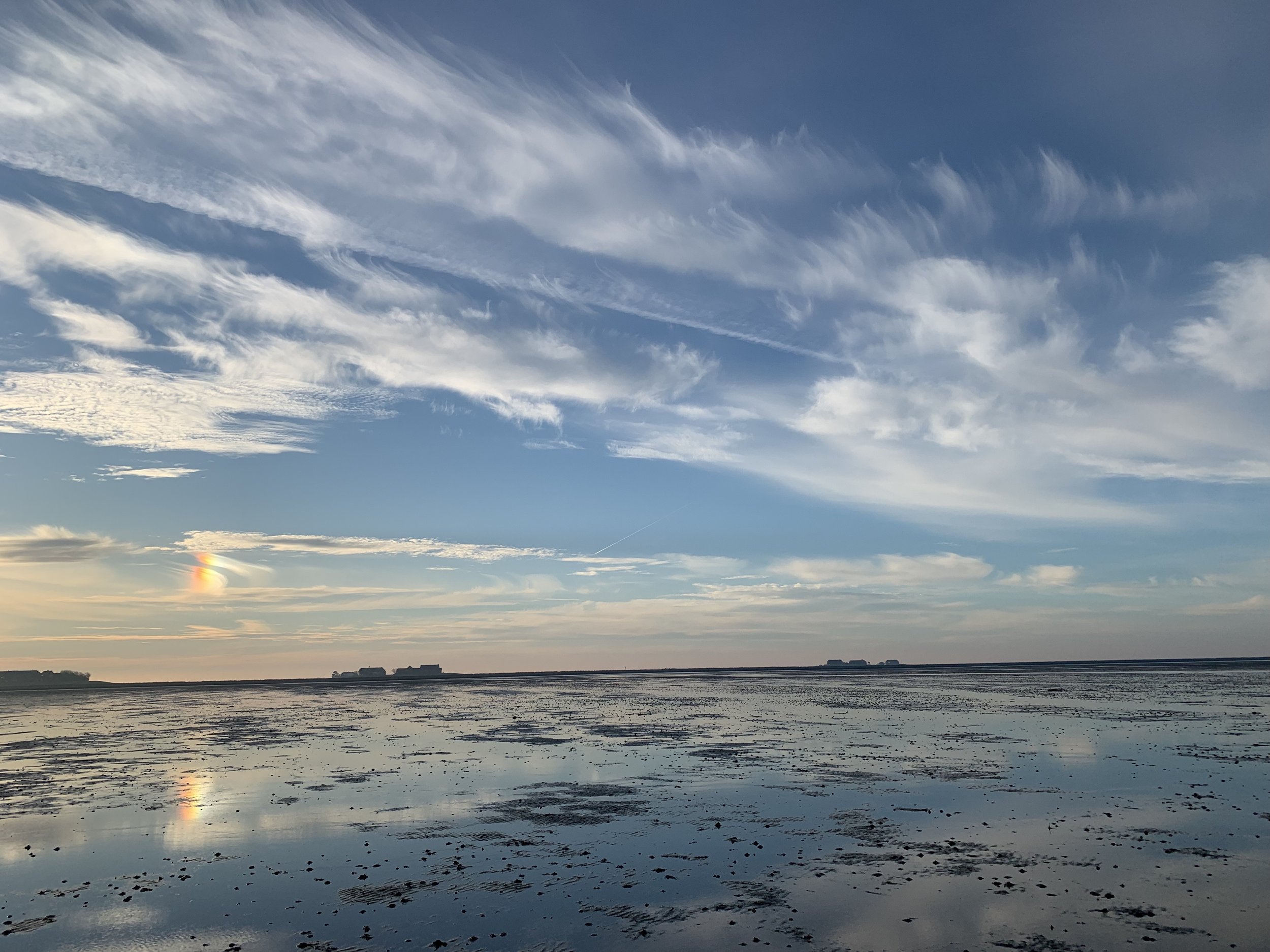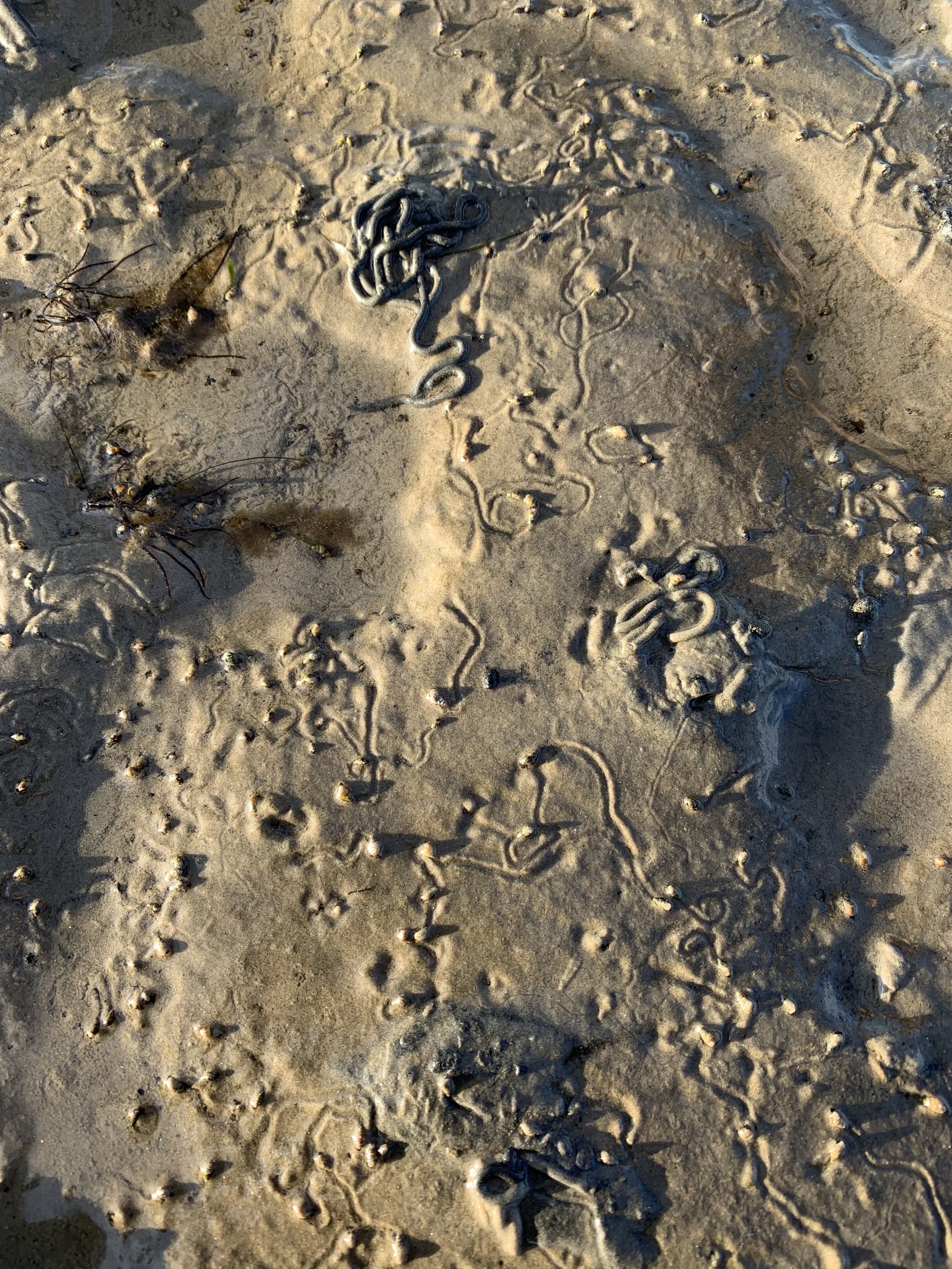
The water has created, intermingled with the land, an unusual sedimentary coast that ebbs and flows as sand, debris, mud, soil, and marine materials are distributed and redistributed by the waves, tides, and currents. The water takes things away by steadily eroding the coast, but it also brings land back. Langeneß is gifted about 1-2 mm of silty sediment a year by the sea. These are tiny increments that matter in this extremely low-lying land. But they will likely not be enough to stave off the rising seas generated by climate change.
In 2009, the Wadden Sea was placed on UNESCO´s World Heritage List. It is one of the world’s most important areas for migratory birds, millions of which feed off the Wadden Sea’s bountiful ecosystem, often while resting from transcontinental flights. We were told by members of the Schutzstation Wattenmeer, where we lived and studied our surroundings, that the biomass produced by the Wadden Sea is one of the densest in the world second to only the Brazilian Amazon. The mud we plodded through in the Wadden Sea, the rising sun in our backs and the steady squelch of our boots accompanying the sound of water, wind, and birds, were teeming with aquatic and terrestrial species both above and below ground – marine, semi-terrestrial, and terrestrial.
